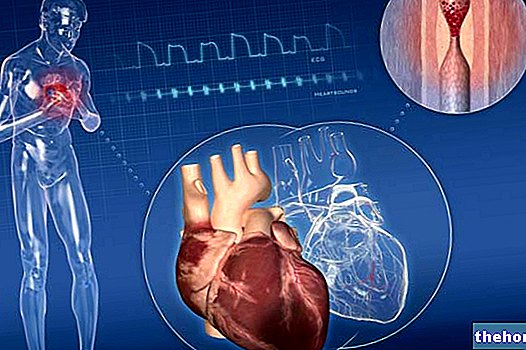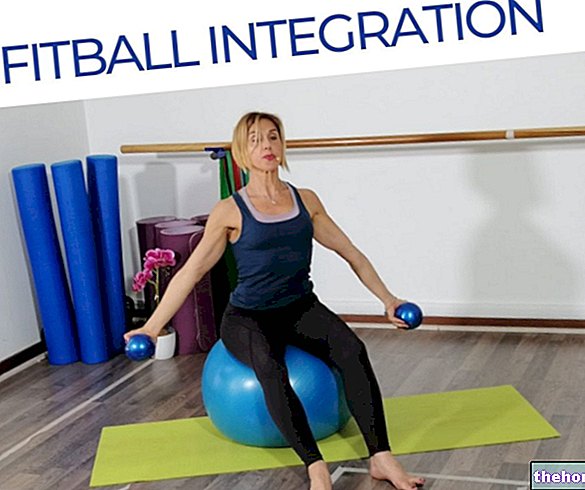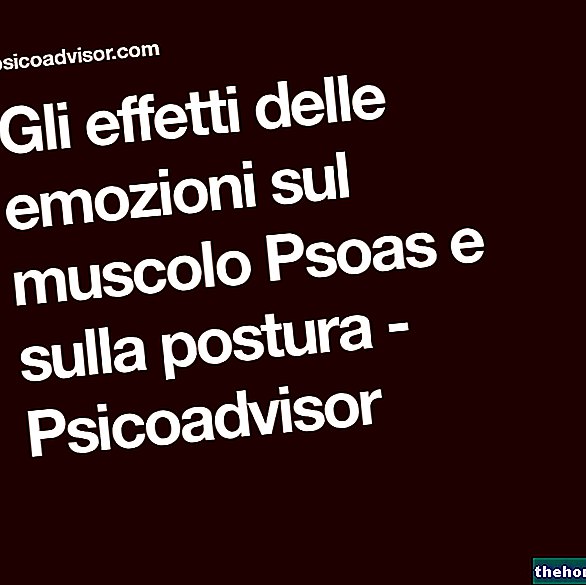" first part
Proprioceptive re-education
The term proprioceptive re-education, as it appears clear from the term itself, means all the methods and exercises aimed at stimulating and re-educating the proprioceptive sensitivity, that is, that which allows us to know the position of our body even with closed eyes and of its segments in space.
Particular receptors collect signals of peripheral origin, transmitting them to the central nervous system which processes the information received and integrates it with other afferents (visual, labyrinthine), to organize adequate motor responses. The function of proprioceptors is therefore essential for regulating muscle tone, posture and the correct execution of movements.
Proprioceptive Exercises
The proprioceptive exercises are therefore those activities that stimulate the proprioceptive system, with the aim of training it to provide rapid and adequate responses in destabilizing and potentially dangerous situations, making the individual aware of his own body. In particular, proprioceptive re-education in the case of the ankle must aim at making the ankle joint acquire greater coordination in muscle contractions and bone levers, in relation to movement.
Initially the proprioceptive re-education is carried out in discharge or in a passive way, to accustom the patient to perceive the different characteristics of the induced movement and to make him aware of his possibilities of motor reaction.
Subsequently, before performing the proprioceptive exercises in an upright position we will recover, if not yet present, an "equal distribution of the load. Then we propose exercises on unstable surfaces, such as circular surfaces, square tablets and hemispheres. The patient he must learn to maintain balance with simple movements of the ankles, initially with the eyes open and with the help of the therapist, then without help and without visual control. The work then continues in monopodalic both on the injured and on the healthy limb. In this phase the therapist can help the patient, or destabilize him with pushes when he has achieved a good balance control. When the patient has recovered a good gait, he proceeds with the execution of a proprioceptive path composed of cushions that have a different consistency and deformability, in order to adapt the step and stimulate the proprioceptive receptors while walking on uneven ground



Muscle strengthening
In motor reactivation, after any trauma, distortive or not, muscle strengthening plays a fundamental role, as a good trophism of the muscles reduces the risk of recurrent injuries and allows the patient to resume at full capacity the activities he performed before the " accident. In the re-education of the ankle after a sprain we must pay particular attention to the movements that we are going to make the patient, so as not to proceed immediately with exercises that can damage the compartment that has suffered the trauma. For this reason it is better to start with very light exercises, divided into several series with few repetitions
The most used tool for muscle strengthening is the elastic, as it allows you to dose the load and is very versatile for this type of exercise. The same exercises can be performed with the help of a sponge ball. When the patient is able to walk without showing lameness and without suffering pain in the affected area, it is possible to proceed with the execution of full load exercises. We can divide these exercises into two categories: the first is for the strengthening of the leg muscles, more precisely for those of the posterior loggia; the second instead is aimed at strengthening the thigh muscles.



Gesture Recovery
The next phase is that of the recovery of the athletic gesture, which is aimed not only at the recovery of the mechanics of the normal step, but at the optimal recovery to return to carrying out physical activities as before the injury.



Rehabilitation in the water
Rehabilitation in water involves the execution of exercises, many times the same ones that are performed in the gym, with the body partially immersed in water.
This type of rehabilitation uses some physical laws such as:
- Archimedes' principle.
- Viscose reaction.
Rehabilitation in water is also divided into three parts:
- Proprioceptive re-education;
- Muscle strengthening;
- Recovery of the gesture.
Proprioceptive re-education
The patient is invited to walk along the pool keeping a floating board under the foot in order to create a situation of continuous instability during the various phases of the step.
Muscle strengthening
Exercises with the step, flexion-extension of the legs with the support of a float, freestyle swimming with fins in such a way as to increase the resistance of the water, walking with tools that increase the resistance of the water in the specific gesture and movements of adduction, abduction and flexion-extension of the leg from standing position.
Gesture Recovery
We will perform various types of walking, forward, backward, sideways, running in three directions, leaps, hops and all the other situations that may be encountered during the patient's return to activity. All these exercises may undergo variations such as, for example, for walking, walking forward before exasperating the knee flexion almost touching the abdominal area, or keeping the legs rigid.
For further information: proprioceptive platform: what it is and which to buy



























